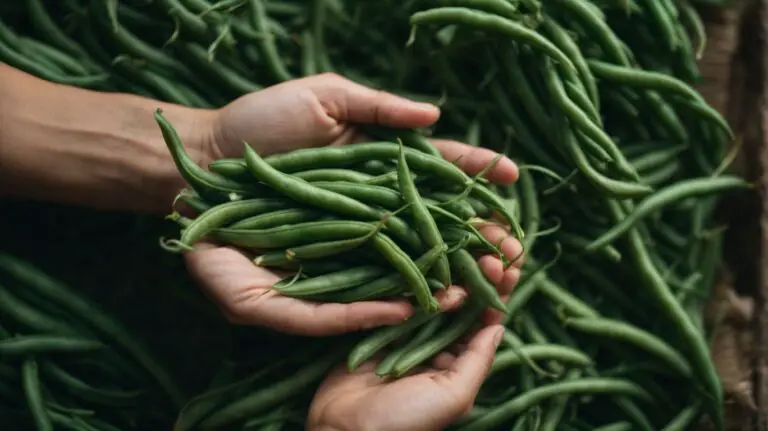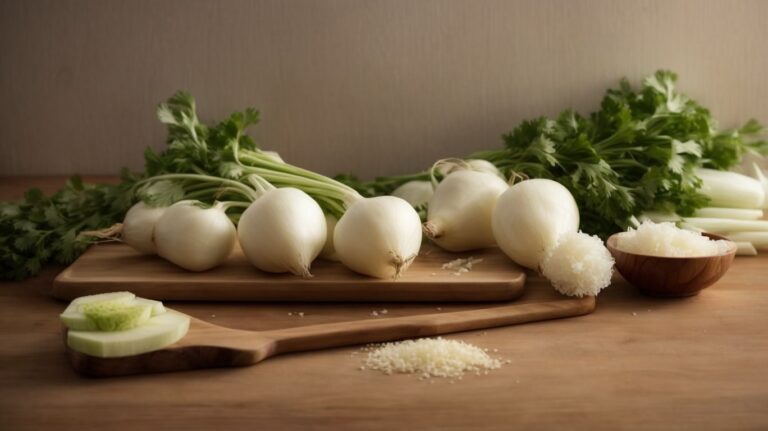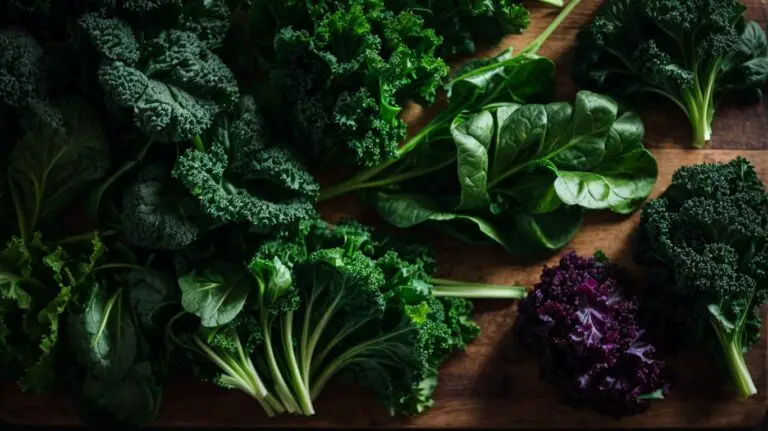How to Cook Ogbono Soup?
Are you looking to spice up your culinary skills with a traditional Nigerian dish? Look no further than Ogbono Soup! This hearty and flavorful soup is a favorite in Nigerian households, and today, we will show you how to make it right in your own kitchen.
From the essential ingredients like Ogbono seeds and assorted meats to the step-by-step cooking process, we will guide you through every detail. Stay tuned for some expert tips and variations to elevate your Ogbono Soup game!
Key Takeaways:
About Ogbono Soup
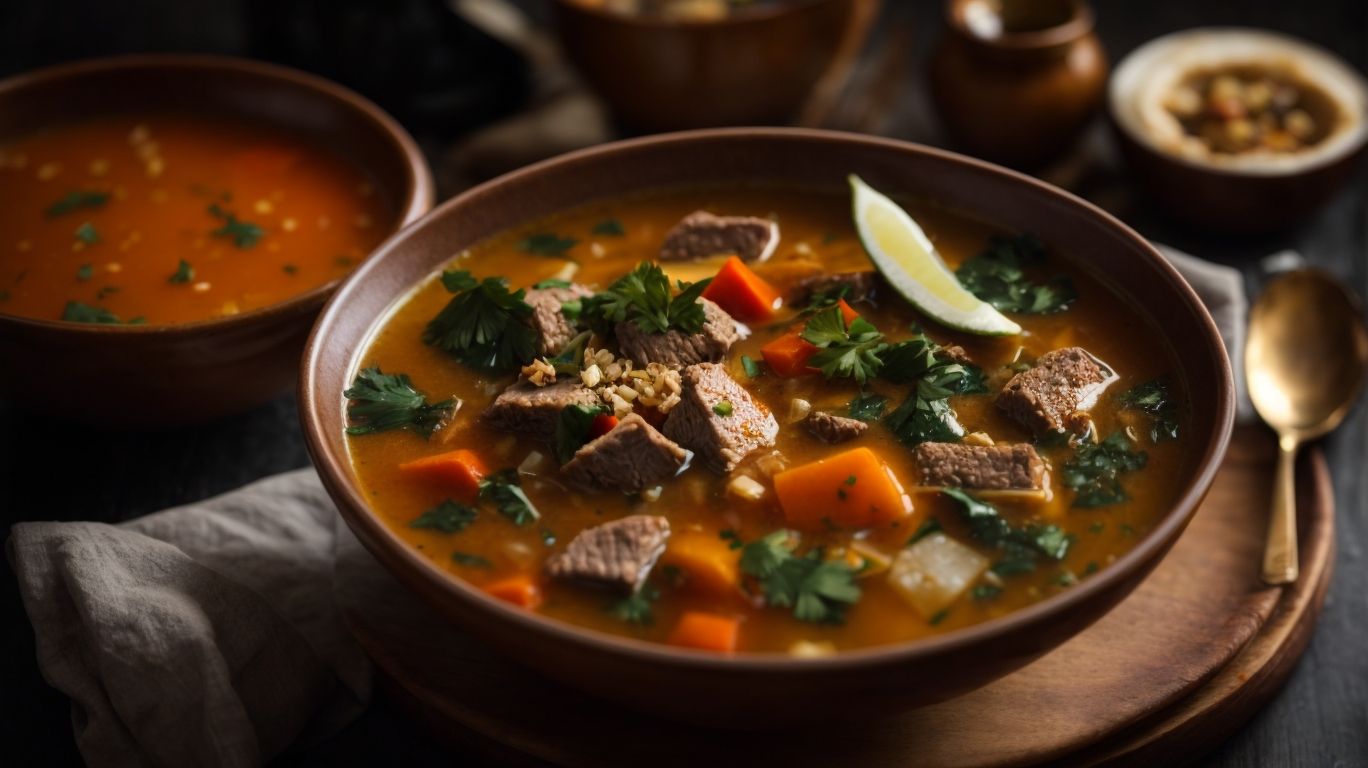
Credits: Poormet.Com – Roy Scott
Ogbono Soup is a popular Nigerian dish known for its rich flavors and hearty stew consistency, enjoyed by various tribes such as the Yoruba.
Originating from the Yoruba culture, Ogbono Soup holds a special place in Nigerian cuisine. It is prepared using ground ogbono seeds, which give the soup its unique texture and nutty flavor. This traditional dish is often cooked with assorted meats, fish, and vegetables, creating a flavorful and nutritious meal.
In Nigerian households, Ogbono Soup is a staple dish that is often served with fufu or pounded yam. The process of making the soup involves simmering the ingredients in a rich stew until they blend harmoniously, resulting in a comforting and satisfying meal that is loved by many.
Ingredients for Ogbono Soup
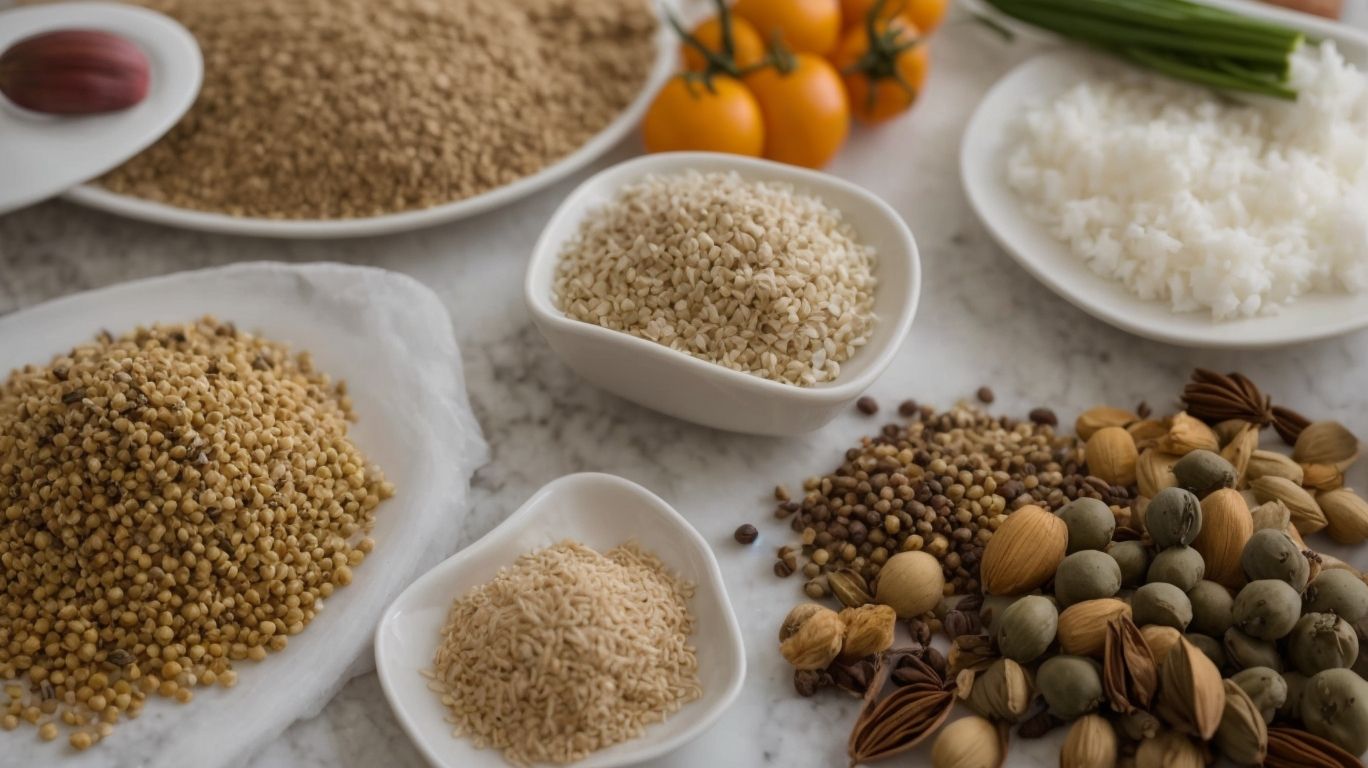
Credits: Poormet.Com – Alan Davis
To prepare a delicious Ogbono Soup, you will need a variety of ingredients including Ogbono seeds, meat, fish, stock, and nutritious leafy greens.
These key ingredients are complemented by the rich and vibrant flavors of Palm Oil that infuses a distinct African essence into the dish. The earthy taste of grounded crayfish further enhances the depth of flavors, adding a delicious umami profile that is characteristic of traditional Nigerian cuisine. The meat and fish bring a protein-packed element to the soup, contributing to its heartiness and fulfilling nature. The inclusion of Nigerian leafy greens not only adds a healthy touch but also imparts a freshness that ties all the flavors together harmoniously.
Ogbono Seeds
Ogbono Seeds are the key ingredient in Ogbono Soup, known for their slimy texture and ability to thicken the soup, creating a delightful mouthfeel.
The uniqueness of Ogbono seeds lies in their natural mucilage, which is responsible for the soup’s characteristic sliminess. When added to the broth, these seeds release a thick, gooey substance that gives the soup a rich and velvety consistency.
This slimy texture plays a crucial role in binding the ingredients and flavors together, while also imparting a lusciousness to the dish. The gel-like consistency created by the seeds not only enhances the overall mouthfeel but also helps in capturing and retaining the flavors of other ingredients.
Meat (Beef, Chicken, or Fish)
Meat, whether beef, chicken, or fish, adds a protein-rich element to Ogbono Soup, enhancing its nutritional value and flavor profile.
Beef, with its robust flavor, brings a savory depth to the soup, complementing the earthy tones of the Ogbono seeds. It also provides a significant amount of protein, essential for muscle growth and repair.
Chicken, on the other hand, offers a lighter meat option, infusing the soup with a delicate taste and adding a tender texture. It is a lean source of protein, making it a healthy choice for those watching their fat intake.
Fish, such as catfish or tilapia, introduces a unique seafood element, enriching the soup with a fresh and briny note. High in protein and heart-healthy omega-3 fatty acids, fish adds a nutritious twist to this traditional dish.
Assorted Meats (Tripe, Cow Foot, etc.)
Assorted Meats such as tripe and cow foot bring depth of flavor and unique textures to Ogbono Soup, adding a rich and savory dimension to the dish.
In Nigerian cuisine, Ogbono Soup is a beloved traditional dish that showcases a harmonious blend of flavors and textures. Tripe, also known as cow stomach lining, offers a chewy and slightly gelatinous texture that absorbs the flavors of the soup beautifully. On the other hand, cow foot, with its tender meat and collagen-rich ligaments, adds a robust and meaty taste to the dish.
These meats provide a contrast of textures, with tripe imparting a subtle crunchiness and cow foot offering a melt-in-your-mouth experience. Together, they contribute to the complexity of the soup, complementing the thick ogbono paste and enhancing the overall dining experience.
Palm Oil
Palm Oil, a staple in Nigerian cuisine, imparts a vibrant color and distinct flavor to Ogbono Soup, enhancing its visual appeal and taste.
When added to the rich blend of ground ogbono seeds, vegetables, and spices, it creates a captivating deep red hue that signifies authenticity and tradition in Nigerian households. The use of palm oil not only adds a beautiful visual element to the soup but also infuses a layer of richness and depth to its taste profile. Its earthy undertones complement the nuttiness of the ogbono seeds, resulting in a harmonious fusion of flavors that is truly unique to this West African dish.
Dry Fish
Dry Fish adds a unique umami depth to Ogbono Soup, complementing the other ingredients with its savory and smoky undertones.
When dried, fish undergoes a transformative process that intensifies its flavors, resulting in a concentrated umami essence that elevates the entire dish. The smoky notes from the dried fish intermingle with the rich Ogbono Soup, creating a symphony of savory undertones that linger on the palate. This culinary technique of incorporating dry fish not only imparts a distinct taste profile but also enhances the overall complexity of the soup, making each spoonful a delightfully flavorful experience.
Stockfish
Stockfish, a traditional ingredient in Nigerian cuisine, contributes a rich and robust flavor to Ogbono Soup, elevating its taste profile.
Derived from dried cod, stockfish has been a staple in Nigerian cooking for generations, adding a unique depth to dishes like Ogbono Soup. Its flavor impact is unmistakable, infusing the soup with a savory richness that is both comforting and delectable.
The process of soaking and simmering the stockfish in the soup allows it to release a burst of umami that melds perfectly with the earthy notes of the Ogbono seeds. This marriage of flavors creates a truly satisfying dish that embodies the essence of traditional Nigerian cuisine.
Crayfish
Crayfish adds a delightful briny essence to Ogbono Soup, enhancing its overall umami profile and depth of flavor.
When the crayfish infuses its unique briny notes into the soup, it creates a savory undertone that perfectly complements the earthy richness of the ogbono seeds. The umami enhancement provided by the crayfish works in harmony with the natural flavors of the ingredients, resulting in a dish that is truly a symphony of taste sensations.
The crayfish brings a nuanced complexity to the soup, imparting a subtle sweetness that balances out the tangy acidity of the tomatoes and the slight bitterness of the ogbono seeds. Its delicate yet distinct presence is what sets Ogbono Soup apart and makes it a beloved staple in Nigerian cuisine.
Onions
Onions provide a subtle sweetness and aromatic base to Ogbono Soup, infusing a fragrant and flavorful essence into the dish.
When added to the simmering pot, onions release their natural sugars which caramelize, enhancing the overall depth of flavor in the soup. Their complex layers of taste, from pungent and sharp to mellow and savory, create a harmonious blend with the rich Ogbono seeds. The onions also lend a satisfying texture to the soup, melting into a tender consistency that complements the creamy nature of the broth.
Seasonings (Maggi, Salt, etc.)
Seasonings such as Maggi and Salt play a vital role in balancing the flavors of Ogbono Soup, ensuring a harmonious taste profile.
These seasonings are not just simple additions but are crucial elements that transform the dish from ordinary to extraordinary. Maggi adds depth and umami richness, enhancing the overall taste experience, while salt acts as a flavor enhancer, bringing out the natural flavors of the ingredients in a subtle yet impactful way.
The magic lies in the delicate balance achieved when these seasonings are added in just the right amounts, creating a symphony of flavors that dance on your taste buds. A well-seasoned Ogbono Soup delights the senses with its complex yet harmonious flavors, leaving a lasting impression of culinary excellence.
Fresh Vegetables (Ugwu, Spinach, etc.)
Fresh Vegetables like Ugwu and Spinach bring a vibrant color and nutritional boost to Ogbono Soup, enriching both its visual appeal and health benefits.
Ugwu, also known as fluted pumpkin leaves, not only add a pop of vibrant color to the soup but also contribute significant health benefits. Its high levels of vitamins A and C, along with essential minerals like iron and calcium, strengthen the immune system and promote optimal health.
Spinach, another powerhouse vegetable, enhances the nutritional value of Ogbono Soup by providing an abundance of micronutrients such as folate, potassium, and magnesium. Its deep green hues further intensify the visual appeal of the dish, making it enticing to both the eyes and taste buds.
Steps to Cook Ogbono Soup
Cooking Ogbono Soup involves a series of steps including preparing the ingredients, blending the Ogbono seeds, and simmering the stew to perfection.
-
Once the ingredients are gathered, the first step is to clean and chop the vegetables, such as okra and spinach, that will be added to the soup.
-
Next, the Ogbono seeds are ground using a blender or mortar and pestle until a smooth paste is achieved.
-
The paste is then combined with palm oil in a pot and gently heated over low heat to prevent burning.
-
As the mixture simmers, it is essential to stir occasionally to ensure the Ogbono does not stick to the pot.
-
Seasonings such as stock cubes, salt, and pepper are added to enhance the flavor profile of the soup.
-
The soup is left to simmer until it reaches a thick and rich consistency.
Prepare the Ogbono Seeds
To begin cooking Ogbono Soup, the Ogbono Seeds need to be toasted and ground to unlock their nutty flavor and thickening properties.
Toast the Ogbono Seeds in a dry skillet over low heat until they become fragrant and slightly browned. This process helps enhance the natural oils and aromas within the seeds, intensifying their flavor profile.
Once toasted, grind the seeds using a food processor or a mortar and pestle to a coarse or fine consistency, depending on your preference. This grinding action releases the oils present in the seeds, further enriching the soup with a velvety texture and a more pronounced nutty taste.
Season and Cook the Meat
Seasoning and cooking the meat, whether beef, chicken, or fish, is crucial to infuse rich flavors into the base of Ogbono Soup.
This process involves marinating the meat with a blend of aromatic spices such as garlic, ginger, and onions to enhance its taste. Once marinated, the meat is seared in a hot pan to achieve a flavorful crust and retain its juices. Each type of meat brings its unique texture and taste to the soup, with beef adding a robust flavor, chicken providing a tender bite, and fish offering a delicate essence.
Soak and Clean the Dry Fish and Stockfish
Before adding Dry Fish and Stockfish to Ogbono Soup, it’s essential to soak and clean them to remove excess salt and preserve their natural flavors.
Soaking dry fish and stockfish involves submerging them in lukewarm water for a few hours or overnight, depending on the thickness and saltiness. This process helps to rehydrate the fish and reduce the saltiness. Some cooks prefer to change the water a few times during soaking to further remove excess salt.
To enhance the natural flavors of the dry fish and stockfish, you can add a squeeze of lemon or a splash of vinegar to the soaking water. This technique not only helps to tenderize the fish but also adds a subtle tanginess, enhancing the overall taste of the Ogbono Soup.
Blend the Ogbono Seeds
Blending the toasted Ogbono Seeds with water creates a smooth paste that acts as a thickening agent when added to the soup base.
Once the Ogbono Seeds are toasted to bring out their rich nutty flavor, they are ground into a fine powder and mixed with water to form a velvety paste.
This paste is not only known for its ability to thicken soups, but it also adds a unique texture that elevates the overall dining experience.
When simmered in a savory broth, the Ogbono paste imparts a silky-smooth consistency, almost giving it a luxurious feel on the palate.
Due to these properties, Ogbono Soup has become a staple in Nigerian cuisine, cherished for its comforting warmth and hearty nature.
Cook the Ogbono Soup
Cooking Ogbono Soup involves simmering the blended mixture with Palm Oil, stock, and seasonings until it reaches a rich and aromatic consistency.
During the simmering process, the flavors of the Ogbono seeds meld with the Palm Oil and other ingredients, creating a velvety texture and deep, earthy flavor profile. The slow simmering allows the soup to thicken naturally, achieving that signature rich consistency that is characteristic of well-prepared Ogbono Soup.
As the soup simmers, the aroma of the ingredients fills the kitchen, tantalizing your senses with the promise of a delicious meal. This gradual integration of flavors is essential for developing the full-bodied taste that makes Ogbono Soup a beloved traditional dish.
Add the Assorted Meats and Fish
Incorporating the Assorted Meats and Fish into Ogbono Soup enhances its heartiness and creates a flavorful medley of textures and tastes.
The blend of tender beef chunks, succulent chicken pieces, and savory fish adds a rich depth to the soup, offering a variety of flavors that complement the earthy essence of the Ogbono. The diverse textures from the different meats create a symphony in each spoonful, with the beef providing a meaty chewiness, the chicken imparting a delicate tenderness, and the fish contributing a flaky softness. This amalgamation of meats and fish not only elevates the overall taste but also adds a complexity that enhances the traditional appeal of the dish.
Add the Vegetables
Adding Fresh Vegetables such as Ugwu and Spinach to Ogbono Soup introduces vibrant colors and essential nutrients, elevating its visual and nutritional appeal.
Fresh vegetables not only enhance the visual appeal of the dish, but they also contribute significantly to its overall nutrition. Ugwu and Spinach are rich in essential nutrients like vitamins A, C, and K, as well as minerals such as iron and calcium. These nutrients play a vital role in supporting a healthy immune system, promoting good vision, and aiding in bone health.
By incorporating these colorful vegetables into Ogbono Soup, you not only add a pop of vibrant green to the dish but also infuse it with a myriad of health benefits. The combination of the dark, earthy Ogbono broth with the bright green hues of the vegetables creates a visually appealing contrast that makes the dish both aesthetically pleasing and nutritious.
Adjust Seasonings and Serve
Before serving Ogbono Soup, it’s essential to adjust seasonings like Maggi and Salt to achieve a perfectly balanced and flavorful dish.
-
After adjusting the seasonings, give the soup a final taste test. This step is crucial to ensure that the flavors have melded together harmoniously. If necessary, you can add a sprinkle of freshly ground black pepper to enhance the overall taste profile.
-
In terms of serving, consider garnishing the Ogbono Soup with a handful of freshly chopped parsley or basil. Not only does this add a pop of color to the dish, but it also imparts a subtle freshness that complements the rich flavors of the soup.
Ogbono Soup Variations
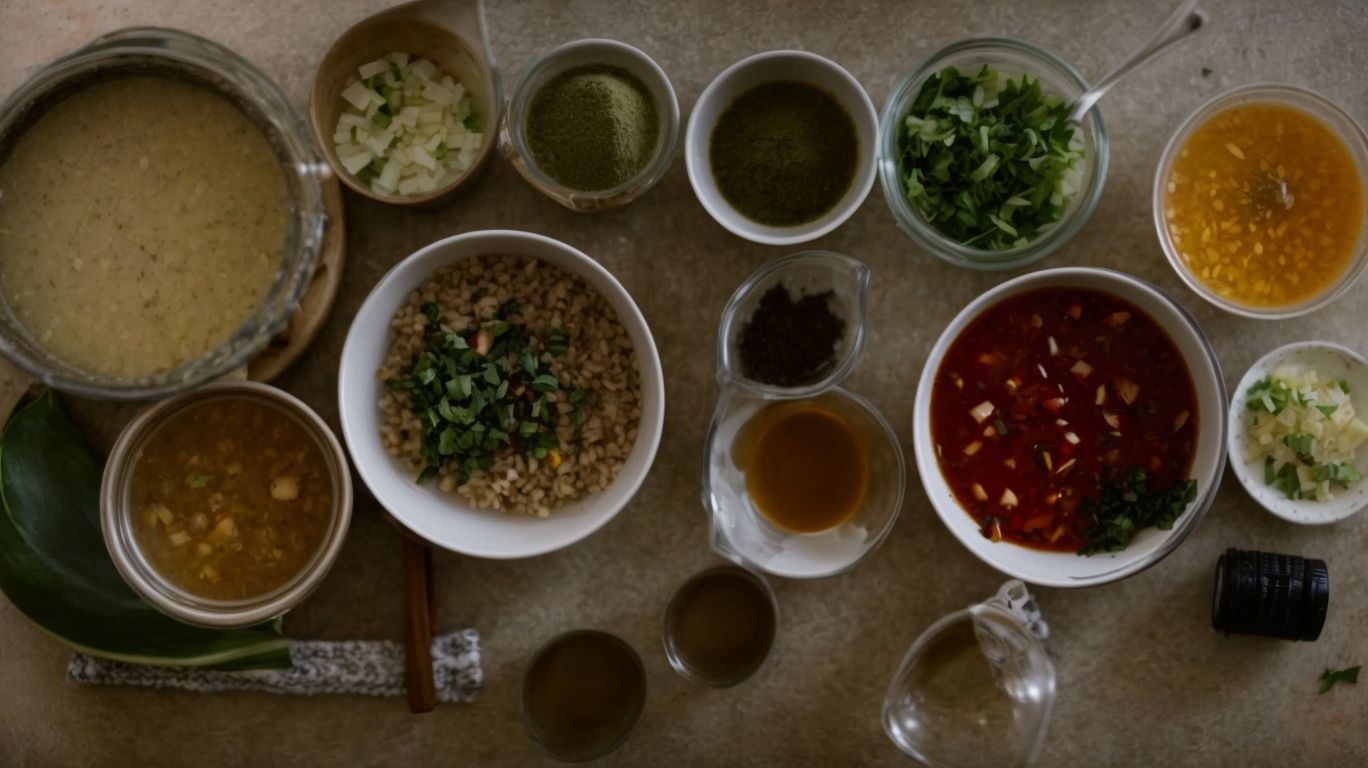
Credits: Poormet.Com – Arthur Hill
Explore the diverse world of Ogbono Soup variations, from combining it with Okra to infusing it with Egusi or the unique flavors of Bitterleaf and Uziza Leaves.
Okra adds a delightful slimy texture to Ogbono Soup, which complements its thick and viscous consistency. Egusi, on the other hand, brings a rich nutty flavor to the soup, enhancing its overall taste profile.
The incorporation of unique ingredients like Bitterleaf and Uziza Leaves introduces a distinctive twist to the traditional recipe, offering a spectrum of flavors ranging from bitter to peppery, catering to a wide range of palates.
Whether you prefer a hearty combination with Okra or a more indulgent option with Egusi, Ogbono Soup provides diverse choices to suit various preferences and culinary explorations.
Ogbono Soup with Okra
Combining Ogbono Soup with Okra results in a delightful fusion of textures and flavors, creating a unique dish that caters to diverse palates.
While Ogbono Soup brings its characteristic rich and nutty undertones to the dish, the addition of sliced Okra introduces a fresh and slightly crunchy element that provides a delightful contrast.
The smoothness of the Ogbono base harmonizes splendidly with the slimy nature of the cooked Okra, resulting in a satisfyingly thick texture with bursts of sliminess in every spoonful.
This innovative combination enriches the overall flavor profile, where the earthiness of the Ogbono intertwines with the mild sweetness of Okra, offering a complex yet balanced taste experience.
Ogbono Soup with Egusi
The combination of Ogbono Soup with Egusi offers a rich and nutty flavor profile, combining two traditional Nigerian ingredients into a satisfying culinary experience.
When these two iconic dishes come together, it creates a delightful fusion that is deeply rooted in the cultural heritage of Nigeria. The nutty flavors of the Ogbono seeds blend harmoniously with the richness of the Egusi seeds, resulting in a velvety texture that is both comforting and flavorful.
The ingredient pairing in this dish is meticulously crafted to enhance each other’s taste. The Ogbono seeds bring a unique thickness to the soup, while the Egusi seeds add a creamy, slightly sweet taste, creating a symphony of flavors that dance on your taste buds.
Ogbono Soup with Bitterleaf
Infusing Ogbono Soup with Bitterleaf introduces a bitter-sweet complexity to the dish, offering a nuanced flavor profile that tantalizes the taste buds.
The marriage of the slightly bitter undertones of Bitterleaf with the rich, nutty essence of Ogbono creates a symphony of flavors that dance on the palate. The contrast between the earthy bitterness of the Bitterleaf and the smooth, viscous texture of the Ogbono seeds adds depth and intrigue to each spoonful. This culinary fusion not only elevates the traditional Ogbono Soup but also highlights the chef’s creativity in blending ingredients for a harmonious taste experience.
Ogbono Soup with Uziza Leaves
Uziza Leaves in Ogbono Soup introduce a peppery zest and aromatic fragrance, elevating the overall sensory experience of the dish with their unique botanical notes.
These vibrant leaves, commonly found in West Africa, add a distinct dimension to Ogbono Soup with their peppery undertones and earthy aroma. As they simmer in the pot, their essence infuses the broth, creating a symphony of flavors that tantalize the taste buds. The flavor enhancements brought by Uziza Leaves offer a delightful contrast to the rich, velvety texture of the Ogbono seeds, resulting in a harmonious blend of spices and herbs.
Tips and Tricks for Cooking Ogbono Soup
Master the art of cooking Ogbono Soup with expert tips on achieving a flavorful broth, selecting the right spices, and choosing the perfect meat and fish combinations.
One of the key secrets to enhancing the richness and depth of flavor in Ogbono Soup is toasting the ground Ogbono seeds before adding them to your pot. This helps to bring out their nutty essence and ensures a robust taste in every spoonful.
Consider incorporating a mixture of meats such as goat meat and assorted seafood like dried fish and shrimp to create a harmonious blend of textures and flavors. Expert chefs also recommend incorporating a bit of crayfish for an extra umami kick.
Frequently Asked Questions
What ingredients do I need to cook Ogbono Soup?
To cook Ogbono Soup, you will need dried ground Ogbono seeds, meat or fish, palm oil, onions, peppers, and your choice of traditional seasonings and spices.
How do I properly prepare the Ogbono seeds for the soup?
To prepare the Ogbono seeds, toast them in a dry pan until they release their aroma. Then grind them into a fine powder using a spice grinder or mortar and pestle.
Can I make Ogbono Soup without palm oil?
Yes, you can substitute palm oil with other types of oil such as vegetable or olive oil. However, palm oil is traditionally used in Ogbono Soup and gives it a unique flavor.
What is the best type of meat to use in Ogbono Soup?
The best type of meat to use in Ogbono Soup is beef or goat meat. You can also use a combination of different meats, such as beef, chicken, and seafood, for a more diverse flavor.
How long does it take to cook Ogbono Soup?
Ogbono Soup typically takes about 45 minutes to an hour to cook. However, the time may vary depending on the type of meat and the heat intensity used.
Can I freeze Ogbono Soup for later consumption?
Yes, you can freeze Ogbono Soup for later consumption. Simply let it cool down to room temperature, place it in an airtight container, and store it in the freezer for up to 2 months. When ready to eat, thaw it in the fridge and reheat on the stove or in the microwave.


